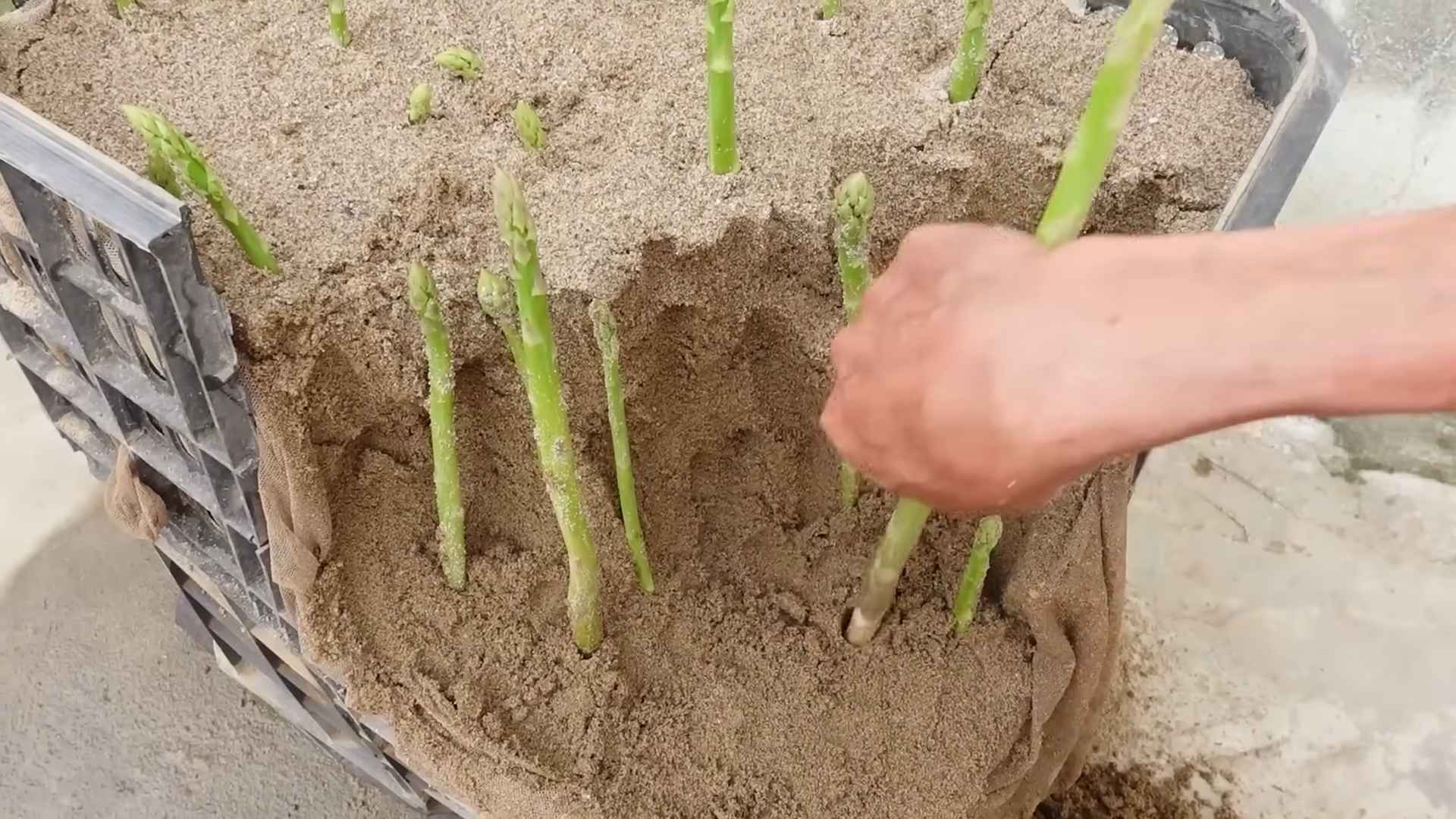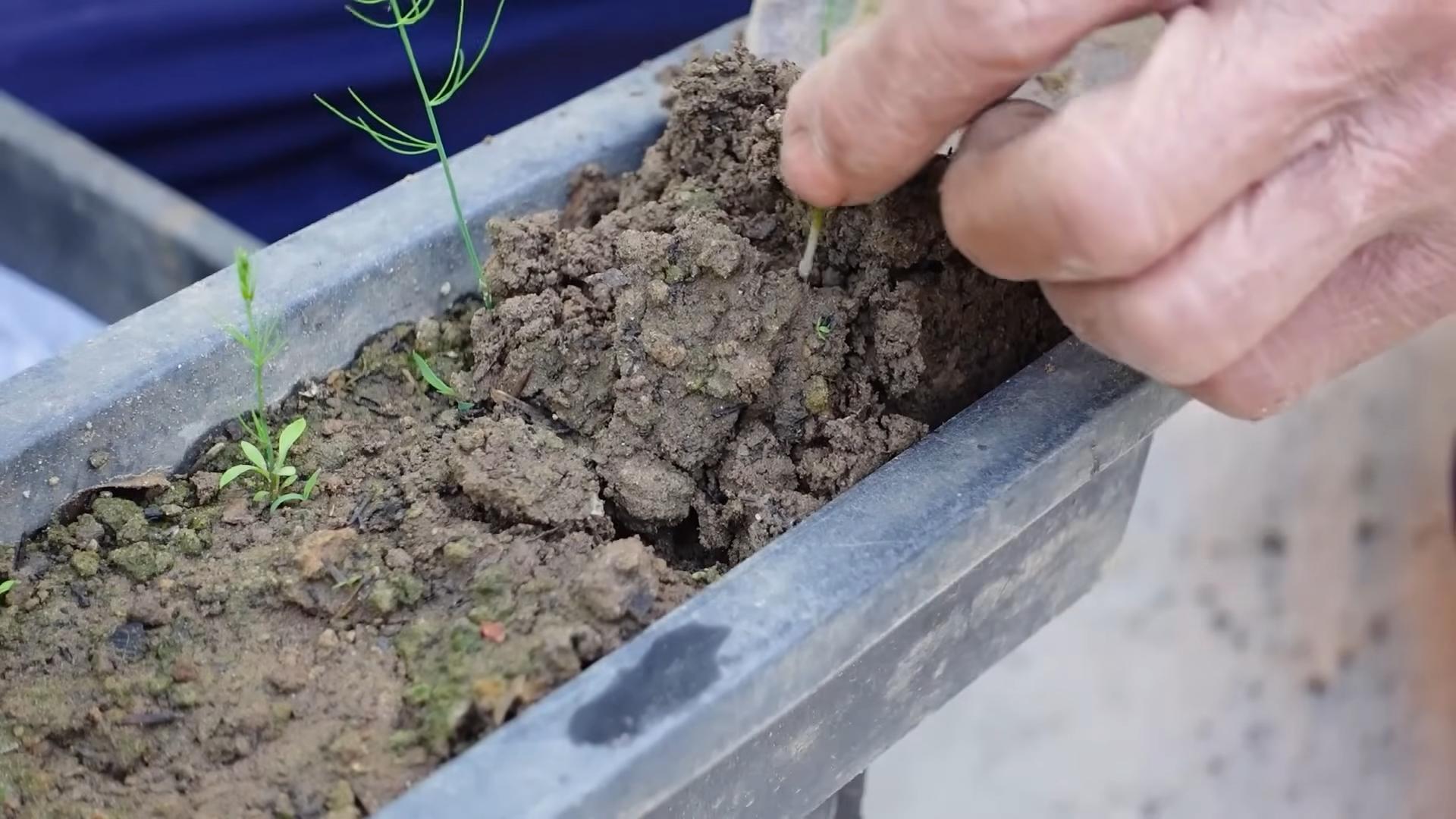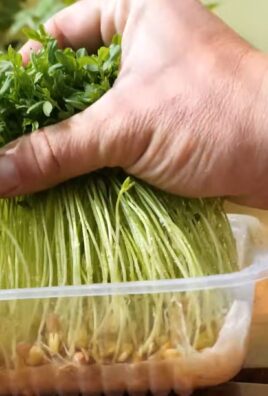Growing asparagus backyard can feel like a daunting task, but trust me, it’s more rewarding than you might think! Have you ever dreamed of strolling into your own backyard and harvesting fresh, tender asparagus spears for dinner? It’s a culinary delight and a gardening accomplishment all rolled into one. For centuries, asparagus has been prized for its delicate flavor and nutritional benefits, dating back to ancient Greece and Rome, where it was considered a delicacy fit for emperors.
But why should you bother with growing asparagus backyard when you can just buy it at the store? Well, store-bought asparagus simply can’t compare to the flavor of freshly picked spears. Plus, cultivating your own asparagus patch is a sustainable way to enjoy this delicious vegetable year after year. Imagine the satisfaction of knowing exactly where your food comes from and the joy of sharing your homegrown bounty with friends and family. This DIY guide will provide you with all the essential tricks and hacks to successfully grow asparagus in your backyard, even if you’re a beginner gardener. We’ll cover everything from choosing the right location and preparing the soil to planting, watering, and harvesting your asparagus crop. Get ready to transform your backyard into an asparagus haven!

Growing Asparagus: A Beginner’s Guide to a Bountiful Backyard Harvest
Asparagus, that delicious and elegant spring vegetable, might seem intimidating to grow, but trust me, it’s totally doable in your own backyard! With a little patience (it takes a few years to get a good harvest), you can enjoy fresh, homegrown asparagus for years to come. I’m going to walk you through everything you need to know, from choosing the right spot to harvesting your first spears. Let’s get started!
Choosing the Right Asparagus Variety
Before you even think about digging, you need to pick the right asparagus variety for your area. Different varieties have different characteristics, like disease resistance and spear size. Here are a few popular choices:
* Jersey Knight: This is a widely recommended variety known for its high yields and resistance to common asparagus diseases. It’s a great choice for beginners.
* Jersey Giant: Similar to Jersey Knight, but produces slightly larger spears.
* Purple Passion: This variety is not only delicious but also beautiful, with its vibrant purple spears. It tends to be sweeter than green varieties.
* Mary Washington: An older variety, but still a reliable choice, especially if you’re looking for something readily available.
I recommend checking with your local nursery or agricultural extension office to see which varieties perform best in your specific climate and soil conditions.
Preparing Your Asparagus Bed: Location, Location, Location!
Asparagus is a perennial, meaning it will come back year after year. So, choosing the right location is crucial. Here’s what asparagus needs to thrive:
* Sunlight: Asparagus needs at least 6-8 hours of direct sunlight per day. The more sun, the better!
* Soil: Well-drained soil is essential. Asparagus crowns will rot if they sit in soggy soil. Sandy loam is ideal, but you can amend heavier clay soils (more on that later).
* Space: Asparagus plants can get quite large, so give them plenty of room. Each plant needs about 18 inches of space.
* Long-Term Commitment: Remember, this is a long-term investment. Choose a spot where you won’t be disturbing the asparagus bed for at least 15-20 years.
Step-by-Step Planting Guide
Okay, now for the fun part – planting! I’m going to break this down into easy-to-follow steps.
1. Soil Testing (Highly Recommended): Before you do anything, test your soil. You can buy a soil testing kit at most garden centers or send a sample to your local agricultural extension office. This will tell you the pH level and nutrient content of your soil, allowing you to amend it properly. Asparagus prefers a soil pH between 6.5 and 7.5.
2. Soil Preparation: This is the most important step! Asparagus needs a rich, well-drained soil to thrive. Here’s how to prepare your bed:
* Clear the Area: Remove all weeds, grass, rocks, and debris from the planting area.
* Dig a Trench: Dig a trench that is about 12-18 inches wide and 6-8 inches deep. The length of the trench will depend on how many asparagus crowns you’re planting.
* Amend the Soil: This is where the soil test results come in handy. Based on the results, amend the soil with:
* Compost: Add plenty of compost to improve soil drainage and fertility. I like to use well-rotted composted manure.
* Sand: If you have heavy clay soil, add sand to improve drainage.
* Lime: If your soil is too acidic (pH below 6.5), add lime to raise the pH.
* Fertilizer: Add a slow-release fertilizer that is high in phosphorus and potassium. Follow the instructions on the fertilizer package. Bone meal is a great natural source of phosphorus.
* Mix it Up: Thoroughly mix the amendments into the soil in the trench.
3. Planting the Crowns: Now it’s time to plant those asparagus crowns!
* Mound the Soil: Create a small mound of soil in the bottom of the trench, about 4-6 inches high.
* Place the Crown: Place the asparagus crown on top of the mound, with the roots spread out around it like a spider.
* Cover the Crown: Gently cover the crown with about 2-3 inches of soil.
* Space the Crowns: Space the crowns about 18 inches apart in the trench.
* Water Thoroughly: Water the newly planted crowns thoroughly.
4. Ongoing Care: Asparagus needs consistent care to thrive.
* Watering: Water regularly, especially during dry periods. Asparagus needs about 1 inch of water per week.
* Weeding: Keep the asparagus bed free of weeds. Weeds compete with the asparagus for nutrients and water. Hand-pulling weeds is the best option, as herbicides can damage the asparagus plants.
* Fertilizing: Fertilize the asparagus bed in early spring and again after the harvest season. Use a balanced fertilizer or side-dress with compost.
* Mulching: Mulch around the asparagus plants with straw, wood chips, or shredded leaves. Mulch helps to retain moisture, suppress weeds, and regulate soil temperature.
* Adding Soil: As the asparagus spears grow, gradually fill in the trench with soil. By the end of the first growing season, the trench should be completely filled in.
Patience is a Virtue: The Waiting Game
This is the hardest part! You need to resist the urge to harvest asparagus in the first year or two. This allows the plants to establish a strong root system, which is essential for future harvests.
* Year 1: Do not harvest any spears. Let them grow into ferns. These ferns will nourish the roots and help the plants grow stronger.
* Year 2: You can harvest a few spears, but only for a short period (about 2 weeks).
* Year 3 and Beyond: You can start harvesting asparagus for a longer period (6-8 weeks).
Harvesting Your Asparagus: The Sweet Reward
Finally, the moment you’ve been waiting for! Here’s how to harvest your asparagus:
1. When to Harvest: Harvest asparagus spears when they are about 6-8 inches tall and the tips are still tightly closed.
2. How to Harvest: Use a sharp knife or asparagus knife to cut the spear at or slightly below the soil surface. Be careful not to damage the surrounding spears or the crown.
3. Harvesting Period: Harvest asparagus spears every day or every other day during the harvest season. As the weather warms up, the spears will grow more quickly.
4. Stop Harvesting: Stop harvesting asparagus when the spears become thin and spindly. This indicates that the plants are starting to exhaust their energy reserves. Let the remaining spears grow into ferns to replenish the roots.
Maintaining Your Asparagus Bed: Long-Term Care
To keep your asparagus bed productive for many years, follow these maintenance tips:
* Fertilizing: Fertilize the asparagus bed in early spring and again after the harvest season.
* Weeding: Keep the asparagus bed free of weeds.
* Mulching: Replenish the mulch layer as needed.
* Cutting Back Ferns: In the fall, after the ferns have turned brown, cut them back to the ground. This helps to prevent disease and pests from overwintering in the asparagus bed.
* Dividing Crowns (Optional): After many years, the asparagus crowns may become overcrowded. If this happens, you can divide the crowns in the spring or fall. Dig up the crowns and separate them into smaller clumps. Replant the clumps in a new location.
Dealing with Pests and Diseases
Asparagus is generally a hardy plant, but it can be susceptible to a few pests and diseases. Here are some common problems and how to deal with them:
* Asparagus Beetles: These beetles can damage the spears and ferns. Hand-pick the beetles and larvae off the plants. You can also use insecticidal soap or neem oil.
* Asparagus Rust: This fungal disease causes orange or reddish-brown pustules on the ferns. Choose rust-resistant varieties. Improve air circulation by spacing the plants properly. Remove and destroy infected ferns.
* Crown Rot: This fungal disease causes the crowns to rot. Ensure good soil drainage. Avoid overwatering. Remove and destroy infected plants.
Enjoying Your Harvest
Now for the best part – enjoying your homegrown asparagus! Asparagus is delicious steamed, roasted, grilled, or sautéed. It’s also great in salads

Conclusion
So, there you have it! Growing asparagus in your backyard isn’t just a gardening project; it’s an investment in years of delicious, fresh harvests. Forget those bland, imported spears from the grocery store. Imagine stepping outside your door and picking vibrant, tender asparagus, bursting with flavor, ready to be steamed, grilled, or roasted to perfection. This DIY trick, while requiring patience upfront, pays dividends in the long run, offering a sustainable and rewarding way to enjoy this springtime delicacy.
The beauty of growing your own asparagus lies not only in the superior taste but also in the control you have over its cultivation. You can choose organic methods, ensuring your asparagus is free from harmful pesticides and herbicides. You can also tailor the growing conditions to your specific climate and soil type, maximizing your yield and the quality of your spears.
Don’t be afraid to experiment! Try different varieties of asparagus to find your favorite flavor profile. ‘Jersey Knight’ is a popular choice for its high yield and disease resistance, while ‘Purple Passion’ offers a unique color and slightly sweeter taste. Consider companion planting with herbs like parsley or basil, which can help deter pests and improve the overall health of your asparagus bed. You can even interplant with early-season vegetables like radishes or lettuce while your asparagus is still establishing itself.
Growing asparagus backyard is more than just a gardening trend; it’s a commitment to fresh, healthy eating and a connection to the natural world. It’s about understanding the seasons, nurturing the soil, and reaping the rewards of your labor. The initial investment of time and effort is well worth it, as an established asparagus bed can produce for 15 to 20 years or even longer!
We urge you to take the plunge and try growing your own asparagus. Don’t be intimidated by the perceived difficulty. With a little planning, preparation, and patience, you can create a thriving asparagus patch that will provide you with years of delicious harvests.
Once you’ve embarked on your asparagus-growing journey, we’d love to hear about your experiences! Share your tips, tricks, and triumphs in the comments below. Let us know what varieties you’re growing, what challenges you’ve faced, and what delicious dishes you’ve created with your homegrown asparagus. Together, we can build a community of asparagus enthusiasts and inspire others to discover the joys of growing their own food. So, get your hands dirty, embrace the challenge, and enjoy the unparalleled taste of homegrown asparagus!
Frequently Asked Questions (FAQ)
How long does it take to harvest asparagus after planting?
Patience is key when growing asparagus! It typically takes 2 to 3 years after planting crowns (dormant roots) before you can begin harvesting. This allows the plants to establish a strong root system, which is crucial for long-term productivity. Harvesting too early can weaken the plants and reduce future yields. During the first year, focus on letting the ferns grow and develop without cutting any spears. In the second year, you might be able to harvest a few spears, but limit it to a very short period (1-2 weeks). By the third year, you can usually enjoy a full harvest season, which typically lasts 6-8 weeks in the spring.
What is the best time of year to plant asparagus?
The best time to plant asparagus depends on your climate. In colder regions with harsh winters, early spring (as soon as the ground can be worked) is generally the ideal time. This allows the plants to establish themselves before the heat of summer. In warmer climates with mild winters, you can plant asparagus in the fall. This gives the crowns a head start before the spring growing season. Regardless of when you plant, make sure the soil is well-drained and amended with plenty of organic matter.
What kind of soil is best for growing asparagus?
Asparagus thrives in well-drained, sandy loam soil with a pH between 6.5 and 7.5. Good drainage is essential, as asparagus roots can rot in soggy conditions. Before planting, amend the soil with plenty of compost or well-rotted manure to improve drainage and fertility. Asparagus is a heavy feeder, so it benefits from regular fertilization. A soil test can help you determine the specific nutrient needs of your soil.
How deep should I plant asparagus crowns?
Dig trenches that are 6-8 inches deep and about 12 inches wide. Create a small mound of soil in the center of the trench and place the asparagus crown on top of the mound, spreading the roots out around it. Cover the crown with about 2 inches of soil. As the asparagus spears grow, gradually fill in the trench with soil until it is level with the surrounding ground. This method helps to protect the crowns from frost and encourages strong root development.
How often should I water asparagus?
Asparagus needs consistent moisture, especially during the growing season. Water deeply and regularly, especially during dry spells. Aim to keep the soil consistently moist but not waterlogged. A good rule of thumb is to water when the top inch of soil feels dry to the touch. Mulching around the plants can help to retain moisture and suppress weeds.
What are common asparagus pests and diseases?
Asparagus beetles are a common pest that can damage the spears and ferns. Handpicking the beetles or using insecticidal soap can help to control them. Asparagus rust is a fungal disease that can cause orange pustules on the ferns. Planting rust-resistant varieties and ensuring good air circulation can help to prevent this disease. Other potential problems include crown rot (caused by poor drainage) and cutworms (which can damage young spears).
How do I harvest asparagus?
Harvest asparagus spears when they are about 6-8 inches tall and about as thick as your finger. Use a sharp knife to cut the spears at ground level. Avoid damaging the surrounding spears or the crown. Harvest spears regularly throughout the harvest season, which typically lasts 6-8 weeks in the spring. As the harvest season comes to an end, allow the remaining spears to grow into ferns, which will help to nourish the plants for the following year.
Can I grow asparagus in containers?
Yes, you can grow asparagus in containers, but it requires a large container (at least 18 inches in diameter and depth) and well-draining potting mix. Container-grown asparagus may not be as productive as asparagus grown in the ground, but it can be a good option for gardeners with limited space. Be sure to provide adequate water and fertilizer, and protect the containers from extreme temperatures.
How do I care for asparagus ferns after the harvest season?
After the harvest season, allow the asparagus ferns to grow and develop fully. These ferns are essential for nourishing the plants and building up their energy reserves for the following year. In the fall, after the ferns have turned yellow or brown, you can cut them back to a few inches above the ground. Remove any fallen ferns to prevent the spread of disease. Apply a layer of compost or well-rotted manure around the plants to provide nutrients for the winter.
What are some delicious ways to cook asparagus?
Asparagus is incredibly versatile and can be cooked in many different ways. Some popular methods include steaming, grilling, roasting, sautéing, and stir-frying. Asparagus pairs well with a variety of flavors, including lemon, garlic, parmesan cheese, hollandaise sauce, and balsamic vinegar. You can also add asparagus to salads, soups, and omelets. The possibilities are endless!




Leave a Comment